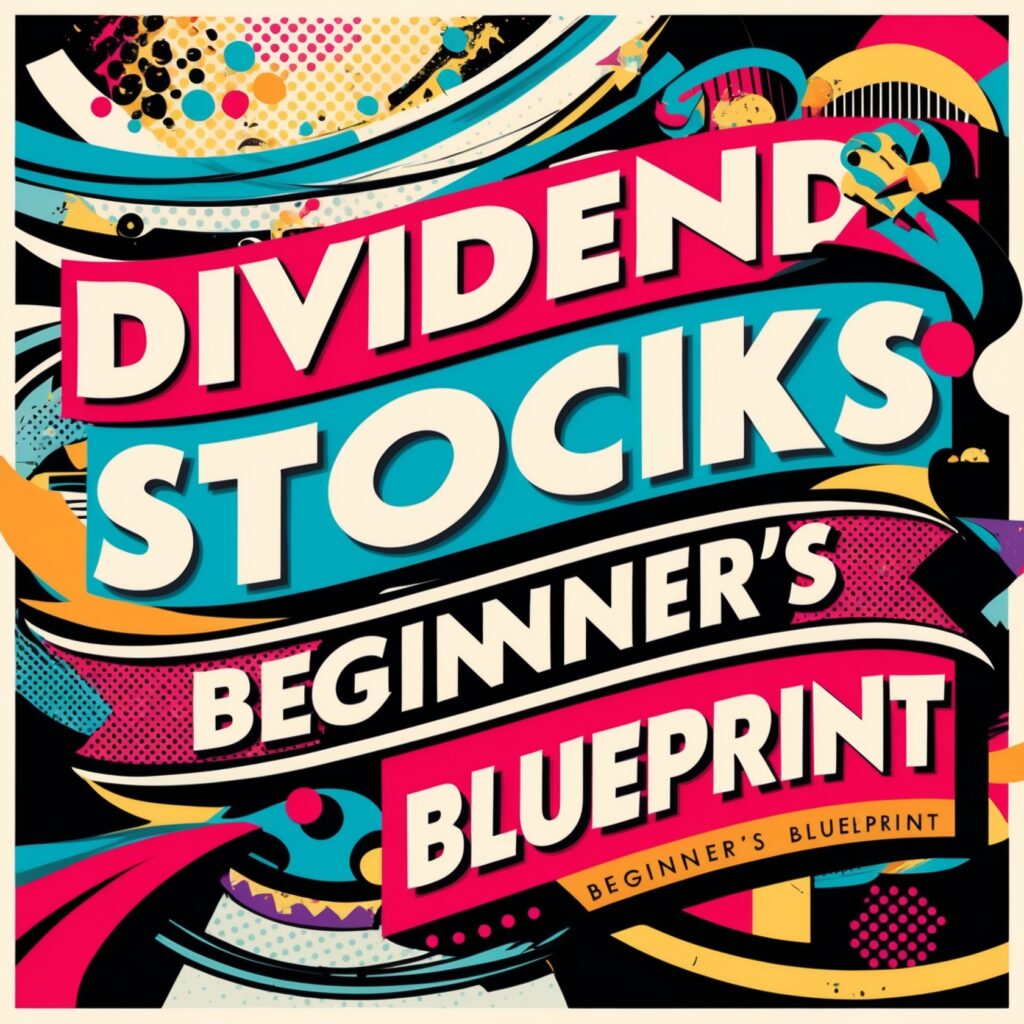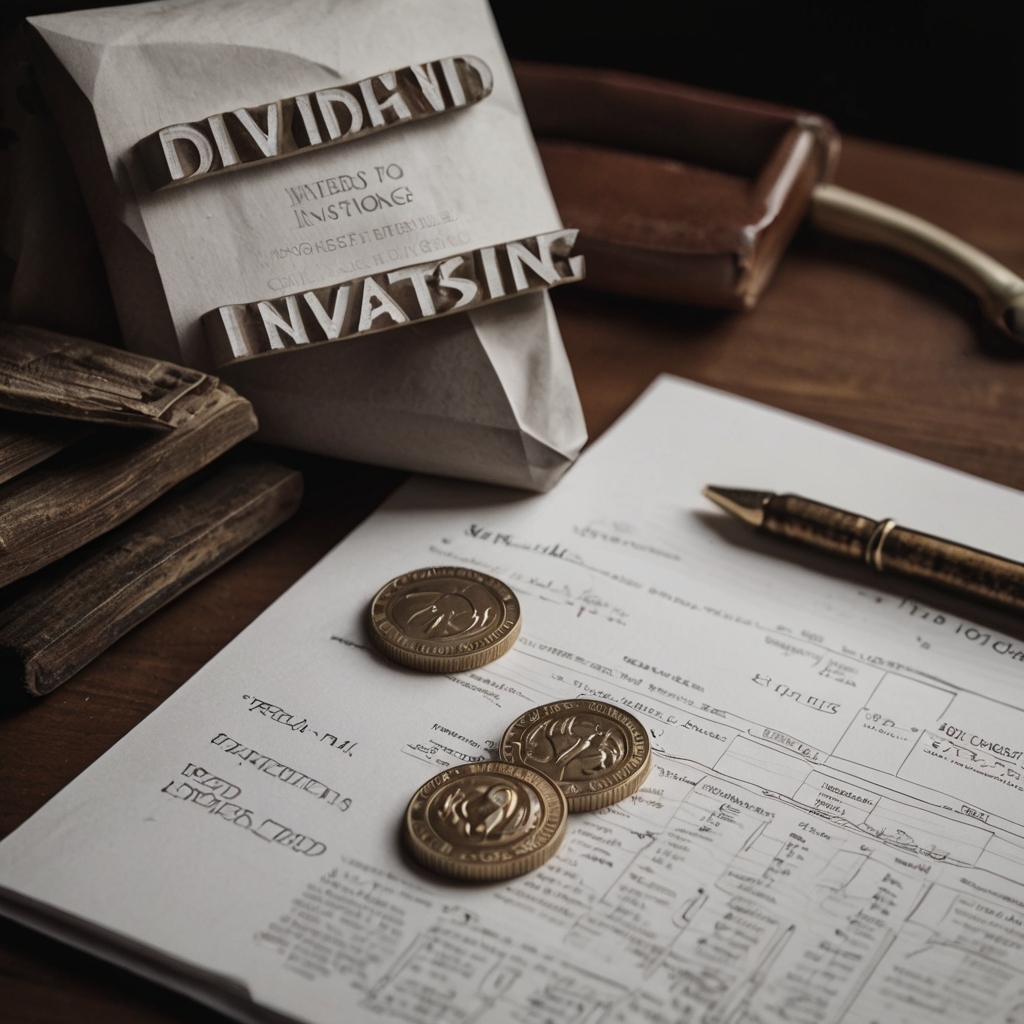Introduction
Imagine waking up every few months and finding extra money in your account—no alarms, no overtime, no boss hovering over your desk. That’s the magic of dividend stocks. They’re more than just investments; they’re tiny money machines quietly working for you, even while you sleep.
Table of Contents
ToggleIn this beginner’s blueprint, we’ll break down how dividend stocks can not only grow your wealth but also give you a sense of stability and freedom. Let’s get you on the path to making your money work as hard as you do.

Understanding Dividend Stocks
What are dividend stocks?
A dividend stock is a share in a company that rewards you with regular payouts—called dividends—just for owning it. Think of it as the company saying, “Thanks for believing in us, here’s your share of the profit.”
How dividends work – your “financial paycheck”
Companies distribute part of their profits to shareholders, often quarterly. If you own 100 shares and the company pays $1 per share annually, that’s $100 a year without lifting a finger.

Types of dividends
Cash dividends: Direct money deposited into your account.
Stock dividends: Additional shares instead of cash.
Special dividends: One-off payments, often larger, during exceptional profit periods.
Why Choose Dividend Stocks for Income
Passive income potential
It’s like planting a money tree. Over time, those regular payouts add up, and if you reinvest them, the snowball effect begins.
Reinvesting dividends for compounding wealth
By reinvesting your dividends into buying more shares, you can speed up your wealth growth—think of it as your portfolio hitting the gym.
Stability and lower volatility
Dividend stocks often belong to well-established companies. They may not skyrocket overnight, but they won’t drop like a stone either.

How to Start Investing in Dividend Stocks
Opening a brokerage account
Pick a reputable broker with low fees and good research tools. Your broker is your doorway to the dividend world.
Understanding dividend yield and payout ratio
Dividend yield: Annual dividend divided by stock price (higher isn’t always better).
Payout ratio: The percentage of earnings paid out as dividends—lower ratios often mean more sustainable payouts.
Researching quality dividend stocks
Look for companies with a track record of consistent dividend growth and solid financials.

Key Strategies for Dividend Investing
The DRIP strategy
A Dividend Reinvestment Plan (DRIP) automatically reinvests your dividends, letting your holdings grow faster without you lifting a finger.
Diversifying your dividend portfolio
Spread investments across sectors—utilities, consumer goods, and REITs—to reduce risk.
Focusing on dividend growth stocks
Stocks that increase dividends year after year can significantly boost your income over time.

Avoiding Common Mistakes
Chasing high yields blindly
A 12% yield might look tempting, but it could be a sign the company is struggling.
Ignoring company fundamentals
A solid business is more important than a high dividend. Always check debt levels, earnings growth, and industry stability.
Not considering dividend sustainability
If a company’s payout ratio is over 100%, those dividends might be on thin ice.

Best Dividend Stock Sectors for Beginners
Utilities
Power, water, and gas companies are the definition of steady. People need them no matter the economy.
Consumer staples
Think toothpaste, detergent, and groceries. These are products that never go out of demand.
REITs (Real Estate Investment Trusts)
They own and manage income-producing real estate and are legally required to distribute most of their profits as dividends.

Tracking and Managing Your Portfolio
Tools to track dividends
Use platforms like Simply Wall St, Seeking Alpha, or your broker’s dashboard to keep tabs on payments and yields.
When to sell dividend stocks
If the dividend is cut or fundamentals weaken, it might be time to move on.
Balancing income vs. growth
Mixing dividend payers with growth stocks can give you both stability and upside potential.

Real-Life Examples of Dividend Success
Sarah, a school teacher, started with $200 a month in dividend stocks. After 15 years of reinvesting, she now earns more from dividends than from teaching. Stories like hers aren’t fairy tales—they’re math and patience in action.
Conclusion
Dividend investing is more than a financial strategy—it’s a mindset. You’re building a future where your money works for you, not the other way around. It’s not about getting rich overnight; it’s about getting richer every night.

FAQs
1. How often do companies pay dividends?
Most pay quarterly, but some pay monthly or annually.
2. Can I live entirely off dividend income?
Yes, but it requires a sizable portfolio and smart investing.
3. What’s the minimum to start investing in dividend stocks?
Even $50–$100 can get you started with fractional shares.
4. Are dividend stocks safe in a recession?
They tend to be more stable, but no investment is 100% recession-proof.
5. How are dividends taxed?
It depends on your country; in many places, they’re taxed as income or capital gains.
I know how frustrating it is feeling like your skills don’t match today’s job market…especially when you’re juggling family responsibilities on top of it all…
Maybe you’ve been burned by shady “work from home” scams before, or just can’t seem to find something flexible that pays decent money.
Well, what if I told you companies are now DESPERATE to hire “AI Operators” with ZERO prior experience?…
You see, artificial intelligence has quietly taken over almost every industry. And businesses need folks to operate these AI tools for all sorts of tasks like:
> Creating social media posts and ads
> Writing articles and product descriptions
> Designing logos, graphics, even videos
> Providing customer support via chat
> And SO much more!


